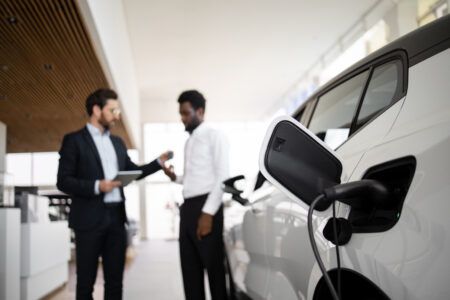The inexorable rise of the electric vehicle (EV) is now gathering speed, which comes with a growing demand for charging – so how will the grid support the surge in energy demand?
By August last year, one in every 12 new cars sold in the UK required plug-in charging. Across Europe, plug-in vehicle sales were up by a third, and the number of new EVs sold globally by the end of 2018 tipped the one million mark. Although these figures may still be some way off the sale of petrol and diesel cars (around 85-million off, in fact), the trend of EV uptake is clearly on the rise. In the context of the global green agenda, this is clearly good news. For the UK it is a particularly promising development in the drive towards the net-zero emissions target, because widespread adoption of EVs is seen as critical to its success.
Growing demand for EV charging
According to the National Grid, the UK Government’s aim for all new cars sold to run on non-fossil fuels by 2040 would result in 33 million EVs on UK roads as early as 2038. This aspiration is part of a wider plan to reduce air pollution, improve public health and recapture productivity loss, estimated to cost the economy £2.7bn every year.
However, there’s still some way to go. There are circa 210,000 EVs on UK roads today; around 1% of households use an all-electric car and about 2% have hybrids. Tens of millions of cars will have to be replaced to reach government targets in an enormous shift in cultural behavior as we swap from pumps to plug-ins – the next two decades could bring a change as significant as when combustion engines first became mainstream.
As EVs and autonomous vehicles become the new normal, we can expect to see this revolution increasing pressure throughout the length and breadth of the chain. It would be a nonsensical notion to go through all this effort to make clean, green motoring mainstream, only to increase fossil fuel consumption elsewhere in the chain. Nowhere will this be more acutely felt than in the infrastructure required to support widespread adoption of EVs.
The availability of power
It was reported last month that there are now more EV charging stations in the UK than conventional fuel stations – according to data published by Nissan, as of August 2019, there are 9,199 EV charging stations across the country, compared with 8,396 standard fuel stations. This news came hot on the heels of a UK Government commitment to almost £40m of investment into electric vehicle charging infrastructure. A total of £37m will be shared between 12 projects, which include solar-powered forecourts, underground charging systems and wireless charging. According to the future of mobility minister Michael Ellis, the Government is “charging up the transport revolution and investing in technologies to transform the experience for electric vehicle drivers”.
While this is all good news, one of the most pressing issues facing EV charging deployment at any scale is the availability of power. The majority of existing electrical connections were specified to suit the needs and use cases at the time of construction. These are often unsuitable for significant increases in demand without potentially costly upgrades. Intelligent EV charging systems that can manage the total building load are suitable to a point, particularly where vehicles are parked for longer periods of time, however we’ll inevitably reach a stage where there simply is not enough energy available from the supply during period of demand.
This issue is further exacerbated when we consider the legislative, consumer and business demands when it comes to charging station locations. It is relatively straightforward to install charging points on an individual basis, in homes or in service stations. But presently there isn’t an overarching strategy across government, organizations and other stakeholders that is necessary if a national EV charging network is to be deployed. In fact, Ofgem’s most recent Future Insights report (July 2018), warned that without a guaranteed flexible charging or load-spreading approach – whereby EV users mainly charge their cars when there is an excess generation in the system – meeting the government’s targets for EV penetration is going to require major surgery to our energy infrastructure.
A holistic approach to energy
Part of the problem is that energy generation and distribution are both based on anachronistic centralized systems, which do not match up with the highly decentralized nature of modern embedded generation and consumption systems. Capacity and design issues with many local and distribution-level electricity network assets mean that major upgrades will be required across most of the country.
The only viable solution is that new, sustainable ways of generating and storing energy for EVs must be fostered, such as solar power and battery storage, which is abundant, flexible to scale, and becoming cheaper year-on-year. In fact, technological advances in the renewable energy sector have made solar panels and battery storage more efficient and cost effective to produce than ever before. This is the principal contributory factor in the falling cost of solar energy, by up to 50% over the past decade. Embedded solar and storage solutions can be implemented to mitigate expensive grid connection upgrades to cope with the extra power demand from having hundreds of EV chargers on some commercial sites, for instance, for vehicle fleets or car parks.
Distributed renewable energy uptake is critical if the reality of the UK’s smart transport system and carbon reduction ambitions are to be realized. Solar generation is proven, sustainable and durable. It’s becoming clear, both practically and fiscally, that renewable energy will be a linchpin as we navigate through this rapid time of change and the UK’s mission to achieving a clean air future
This article is written by Thomas Newby, chief operating officer (Field & Installation), Tonik Energy





